Wheel Block System
Polyurethane Coated DRS Wheel Block System
A polyurethane coated wheel block is a specialized load-bearing component used in various industrial applications, particularly in material handling systems, cranes, transfer carts, and automated guided vehicles (AGVs). It consists of a metal wheel core—often made from high-strength steel or cast iron—encased in a layer of polyurethane elastomer. This polyurethane coating provides a unique combination of durability, resilience, and noise reduction, making it ideal for demanding operational environments.
1. Structure and Composition
Wheel Core
Material: Typically forged steel, cast steel, or ductile iron.
Function: Provides the main load-bearing capacity and structural integrity.
Polyurethane Coating
Material: High-performance thermoset polyurethane elastomer.
Thickness: Often ranges from 5 mm to 25 mm, depending on load and application.
Bonding: Coating is chemically bonded to the wheel core through specialized surface treatment and casting processes to ensure high adhesion.
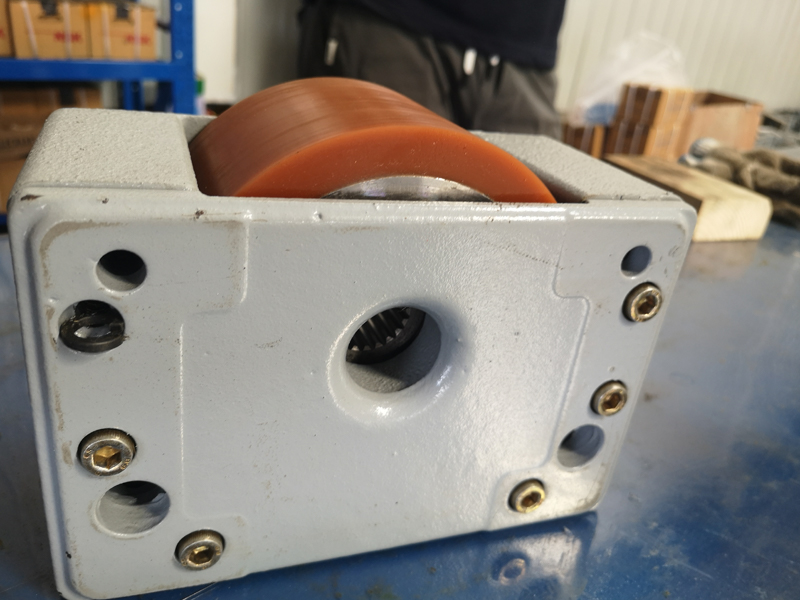
2. Key Features
High Load Capacity – Maintains structural strength while providing surface protection.
Excellent Wear Resistance – Polyurethane resists abrasion, prolonging service life.
Low Noise Operation – Dampens vibration and rolling noise compared to all-metal wheels.
Non-Marking – Polyurethane coating prevents floor scratches and surface damage.
Chemical Resistance – Resists oils, greases, mild acids, and other industrial chemicals.
Shock Absorption – Reduces impact forces during operation, protecting both the wheel and the rail/track.
3. Typical Applications
Overhead Cranes – Used in crane wheel blocks for smooth and quiet travel on steel rails.
Automated Guided Vehicles (AGVs) – Improves traction and reduces maintenance on industrial floors.
Transfer Carts – Used in heavy-duty rail-guided transfer platforms in factories.
Conveyor Systems – Provides quiet, non-marking operation for material handling lines.
Port Equipment – Ideal for gantry cranes and container handling machinery.
4. Advantages over Metal Wheels
| Feature | Polyurethane Coated Wheel Block | All-Metal Wheel Block |
| Noise Reduction | Excellent | Poor |
| Floor Protection | Yes | No |
| Wear Resistance on Rails | High | Moderate |
| Chemical Resistance | High | Low to Moderate |
| Shock Absorption | Good | Poor |
| Cost-Effectiveness (Long Term) | High | Medium |
5. Maintenance and Service Life
Inspection: Regularly check for cracks, peeling, or uneven wear on the polyurethane layer.
Lubrication: Maintain bearings and axle assemblies as per manufacturer recommendations.
Environment: Avoid prolonged exposure to extreme temperatures above polyurethane’s rated limits.
Service Life: Typically lasts 2–5 times longer than rubber-coated wheels under similar conditions, depending on load and usage frequency.
Polyurethane coated wheel blocks combine the structural strength of metal wheels with the protective and performance benefits of polyurethane elastomers. They are widely adopted in modern industrial systems for their durability, noise reduction, floor protection, and versatility. This makes them a preferred choice for applications where equipment longevity, operator comfort, and facility protection are critical.
Latest News & Blog
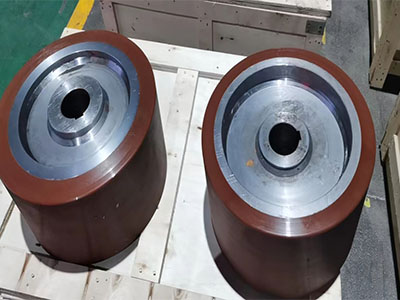
How Polyurethane Wheels Improve Stacker Performance in Harsh Environments
11 May, 2023Polyurethane wheels can effectively reduce vibration and buffer performance, which can make the stacker can run smoothly in different terrain and environment, and improve operation efficiency.
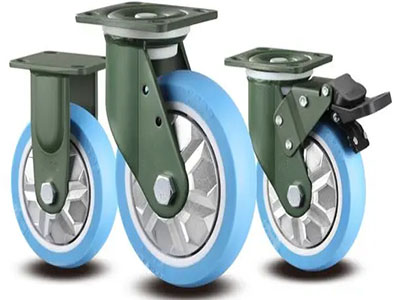
Different Types of Polyurethane Coating Wheels
11 May, 2023Polyurethane wheels occupy an important market with its unique characteristics and application scenarios, including TPU wheels, CPU wheels and PUE wheels, etc., each has advantages such as ground protection, friction resistance, UV resistance, etc., suitable for different occasions, improve work efficiency.
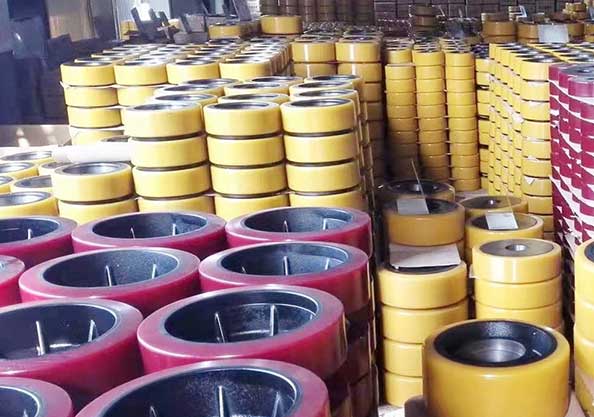
Drive Rollers for Pallet Trucks and Forklift Trucks
11 May, 2023We provide a standard range that includes a variety of drive rollers for pallet trucks and forklift trucks, as well as drive and running wheels for a variety of industrial trucks.

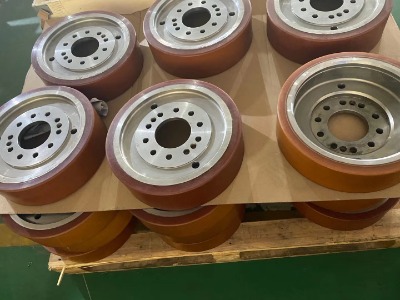
Flange-Mounted Vulkollan Wheels for AGVs
11 May, 2023Vulkollan wheel offers exceptional load-bearing capacity, outstanding wear resistance, excellent resistance to oil and chemicals, as well as superior damping effects against impacts and vibrations.